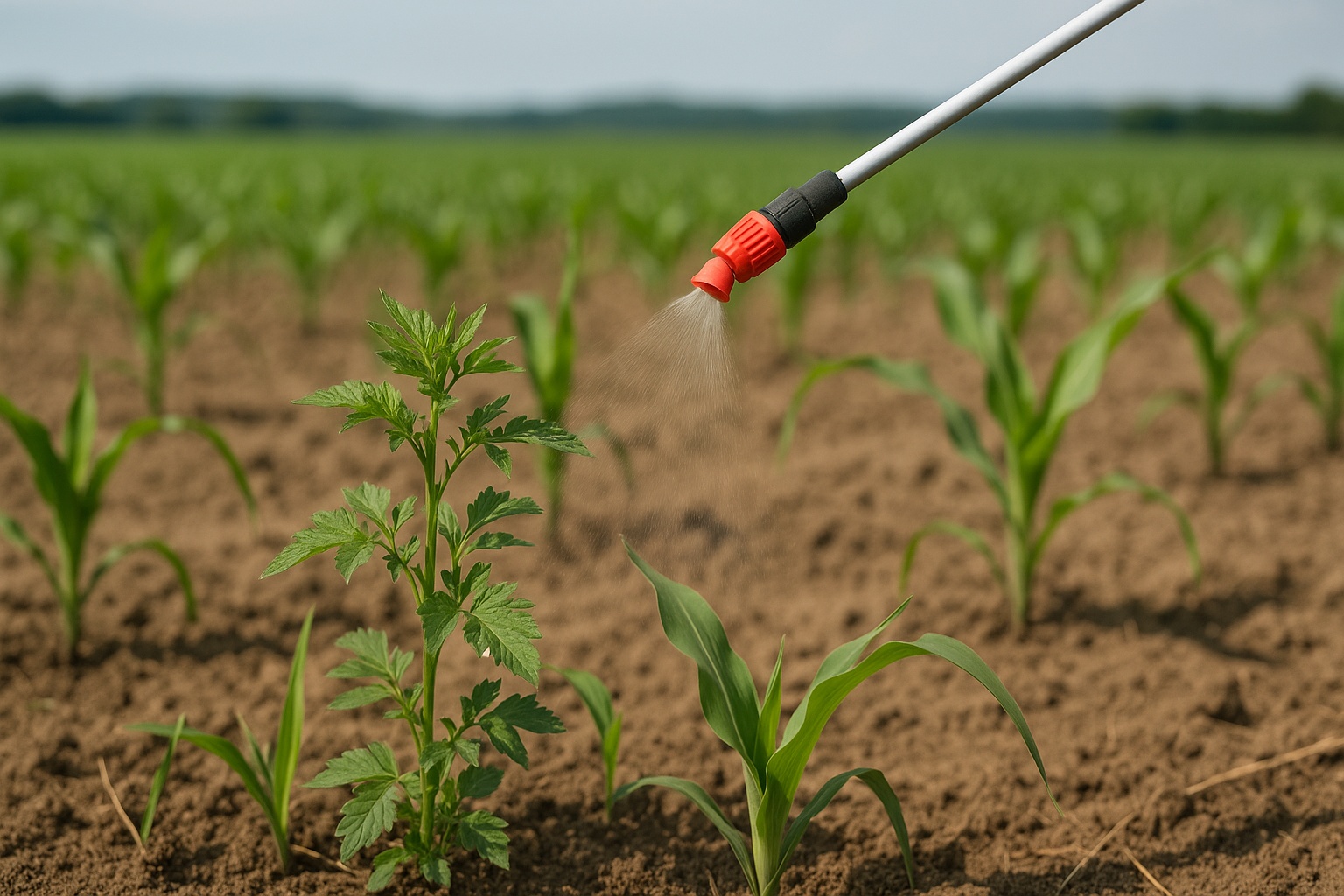Paclobutrazol isn’t a household name, but its influence in modern farming is undeniable. Quietly powering healthier crops, earlier flowering, and improved yields, this chemical regulator is transforming how growers manage plant development. In a world demanding more food from less land, with unpredictable weather patterns and shrinking natural resources, paclobutrazol stands out—not in flashy headlines, but in dependable results on the ground.
What Is Paclobutrazol?
Essentially, paclobutrazol is a triazole compound that functions as a plant growth regulator (PGR). It functions by preventing the biosynthesis of gibberellins, the plant hormones that cause stem elongation. In the absence of this hormone, plants become stronger and shorter, directing their energy toward fruit development, root growth, and blooming.
There is no fertilizer-like effect of paclobutrazol. The plant isn’t fed by it. Rather, it directs its behavior, promoting resilience, strength, and density while slowing vertical growth.
Its molecular tenacity gives farmers a unique tool to:
- Reduce lodging in cereals like rice and wheat
- Promote uniform flowering in fruit trees and ornamentals
This mechanism is particularly important in high-density farming systems, where even a few inches of unexpected height can ruin productivity or invite pests.
A Game-Changer for Commercial Growers
Paclobutrazol has been used in commercial agriculture in a variety of fields, such as tree fruit production, floriculture, and horticulture. For example, the technology helps mango growers in India manage harvest time over hectares of orchard land by synchronizing flowering and improving fruit set.
Pacobutrazol is used by producers to produce compact, marketable specimens of decorative plants that flourish in retail settings, such as bedding plants, chrysanthemums, and marigolds. The compound has also gained popularity in grass management, where superintendents of golf courses use it to keep playing grounds immaculate and cut down on the frequency of mowing.
The adaptability of paclobutrazol across such diverse applications proves one thing: this isn’t a niche tool. It’s a versatile workhorse.
Why Timing and Dosage Matter
Using paclobutrazol effectively requires precision. Overuse can cause undesirable side effects such as excessive stunting, delayed recovery, or residue buildup. Underuse, and the benefits don’t materialize.
Factors affecting its performance include:
- Crop type and variety
- Soil composition and organic matter
- Weather conditions at application
- Application method (soil drench, foliar spray, etc.)
In particular, timing cannot be negotiated. When used too late, it loses the window of opportunity to affect hormone balance during development. If applied too soon, energy may be inefficiently redirected by the plant. Here, seasoned growers and agronomists rely on data-driven choices, local knowledge, and field experiments.
For instance, paclobutrazol is frequently used in mango agriculture to promote synchronized flowering shortly before the onset of the rainy season. Likewise, in greenhouse environments, growers modify the application schedule according to temperature and photoperiod patterns.
The Link Between Plant Growth Regulators and Market Yield
The challenge for modern agriculture is to produce more with less. Quality must increase along with yields. Plant growth regulators play a role here. Farmers gain a tactical edge from regulators like paclobutrazol, which optimize growth processes from within the plant.
Clobutrazol-treated tomato plants exhibited a 15% increase in fruit set with decreased height, according to a study published in the Journal of Plant Growth Regulation. Similarly, without sacrificing grain weight, paddy fields treated with paclobutrazol showed a 20–25% reduction in lodging.
Not only does this type of modification enhance the field, but it also streamlines the supply chain. Harvests that are consistent in flowering are predictable. Compact plants use less space when being transported. The advantages extend well beyond the soil.
Because of this, many contemporary producers utilize specialized products, such as Taboli plant growth regulator, which is renowned for its reliability and suitability for a wide range of crops.
Environmental Considerations and Soil Impact
Although paclobutrazol is effective, there are legitimate environmental concerns due to its persistence in the soil. It doesn’t degrade immediately after application due to its comparatively long half-life. Remainders may persist across seasons in soils with minimal microbial activity, which could have an impact on succeeding crops.
However, the majority of field applications maintain residues well below safety tolerances by adhering to stringent intervals and approved dosages. To mitigate any lingering impacts, several farmers have implemented biological treatments or rotation techniques.
The microbial breakdown of paclobutrazol and its breakdown by improved composting or organic matter integration are currently the subjects of an expanding body of research. Combining it with biofertilizers to produce a more balanced soil ecosystem is one promising strategy—evidence that the agriculture sector is long-term oriented.
Paclobutrazol and Climate Resilience
Paclobutrazol provides an unexpected yet useful buffer as climate stress increases. Numerous crops have shown signs of drought-tolerant behavior in treated plants, primarily as a result of an enhanced root-to-shoot ratio. Plants that are more compacted endure less transpiration stress, conserving water without compromising yield.
Research conducted in dry areas of Mexico and sub-Saharan Africa has demonstrated that paclobutrazol treatment increases the survival rates of maize and sorghum under drought. These results suggest that the molecule has a novel function as a tool for climate adaptation as well as a growth regulator.
Actually, based on anticipated climate variables, farmers are using tools such as the CIMMYT Decision Support Tool to determine when and how to apply paclobutrazol. Increasing the system’s overall resilience is now more important than merely increasing yield.
“Plants may not speak, but how they grow tells us everything we need to know about their environment.”
The Science Behind the Scenes
Clobutrazol works at the molecular level by specifically targeting the gibberellin production pathway enzyme ent-kaurene oxidase. By reducing internodal elongation, this inhibition frees up energy for other essential functions. Higher amounts of endogenous cytokinins, improved glucose storage, and a more robust chlorophyll content are the outcomes.
To the non-scientist, these changes translate to:
- Deeper root systems that improve nutrient uptake
- Denser foliage that resists pests and diseases
- Uniformity in flowering and fruiting cycles
Terms like “morpho-regulation” and “growth harmonization” have started circulating in agronomic research circles to describe this phenomenon. It’s not just about shrinking plants. It’s about synchronizing them with their environment.
FAQs
- Is paclobutrazol safe for all crops?
No. It is crop-specific and must be used only on plants that respond favorably to its application. Some crops may show stunted or irregular growth if misused. - Can I apply paclobutrazol multiple times in a season?
Generally, a single application is sufficient. In rare cases, split applications are used, but always under expert guidance. - Does it impact the taste or nutrition of fruits?
Not directly. When used properly, paclobutrazol has no proven negative impact on flavor or nutritional content. In some cases, it even improves fruit firmness and shelf life. - Is it allowed in organic farming?
No. Paclobutrazol is a synthetic regulator and is not permitted under most organic certification standards.
Tools, Trends, and Future Potential
Precision agriculture holds the key to the future of paclobutrazol utilization. Farmers are tailoring dosages to specific plants using AI-based soil analytics and sensor-driven application systems. These micro-applications maximize revenues while minimizing waste and environmental effect.
Nano-formulations of paclobutrazol are another new area of research. In order to improve uptake and reduce necessary quantities, researchers are looking into ways to encapsulate the compound in biodegradable carriers that release it gradually.
Another aspect is regulatory monitoring, as some nations have tightened residue limitations on food exports. But in the end, this is encouraging producers to create cleaner, more sustainable formulations, which will benefit farmers and consumers alike.
Where Knowledge Meets Practice
Despite not making the front page, paclobutrazol has emerged as a reliable ally in the agricultural trenches. Its capacity to direct plant growth from the inside out is indicative of the evolving values of farming: resilience over chance, control over chaos, and precision over abundance.
The quiet consistency of paclobutrazol is what gives it its power, whether it’s reducing water stress in African maize fields or synchronizing mango blossoms in India. It isn’t a miraculous substance. It’s a methodical, scientifically supported, and becoming more and more crucial approach.
Furthermore, even though the name might be difficult to pronounce, its function is simple to understand. In today’s farming jargon, paclobutrazol doesn’t yell. It functions.


